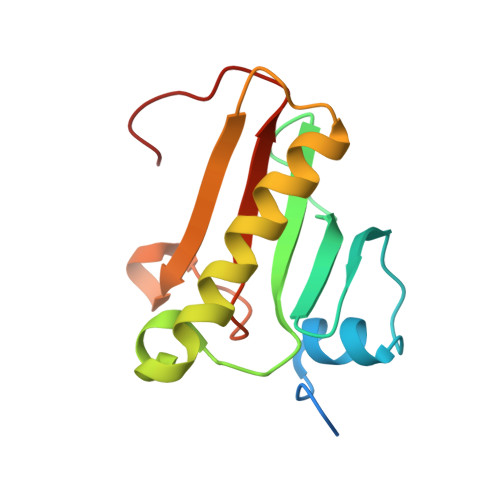Inhibition of HINT1 Modulates Spinal Nociception and NMDA Evoked Behavior in Mice.
Shah, R.M., Peterson, C., Strom, A., Dillenburg, M., Finzel, B., Kitto, K.F., Fairbanks, C., Wilcox, G., Wagner, C.R.(2019) ACS Chem Neurosci 10: 4385-4393
- PubMed: 31503445
- DOI: https://doi.org/10.1021/acschemneuro.9b00432
- Primary Citation of Related Structures:
6N3V, 6N3W, 6N3X, 6N3Y - PubMed Abstract:
The interactions between the mu-opioid (MOR) and N -methyl-d-aspartate receptor (NMDAR) constitute an area of intense investigation because of their contributions to maladaptive neuroplasticity. Recent evidence suggests that their association requires the involvement of histidine triad nucleotide-binding protein (HINT1) with the enzyme's active site being critical in its regulatory role. Since it is known that spinal blockade of NMDA receptors prevents the development of opioid analgesic tolerance, we hypothesized that spinal inhibition of the HINT1 enzyme may similarly inhibit opioid tolerance. To address these questions, we evaluated novel HINT1 active-site inhibitors in two models of NMDAR and MOR interaction, namely, MOR inhibition of spinal NMDA activation and acute endomorphin-2 tolerance. These studies revealed that while the tryptamine carbamate of guanosine inhibitor, TrpGc, blocked both the development of opioid tolerance and the inhibitory effect of opioids on NMDA activation of the NMDA receptor, acyl-sulfamate analogues could only block the latter. Thermodynamic binding and X-ray crystallographic studies suggested that there are key differences between the bound HINT1-inhibitor surfaces that may be responsible for their differential ability to probe the ability of HINT1 to regulate cross talk between the mu-opioid receptor and NMDA receptor in the spinal cord.


















